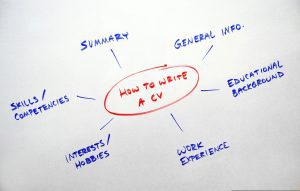Ever wondered why CVs vary in look and content? You’re not alone! There are different types of CVs to reflect different stages in your career, and what’s right for you will depend on a range of factors. Here’s a rundown of the three most common types, and how you can create one using a CV maker.
What are CVs?
A CV, or curriculum vitae, is a document that outlines your professional accomplishments and experience. It’s typically used to apply for jobs, scholarships, and other opportunities. CVs normally contain your name, contact information, education, work experience, and skills.
Why do you need a CV?
A CV is an important document to have in your professional toolkit. It helps potential employers get a sense of who you are, what you’ve done, and what you’re capable of. A well-written CV can help you stand out from the competition and land your dream job.

Types of CVs
There are four types of CVs: chronological, functional, combination, and targeted. Let’s take a closer look at each one.
Chronological CV
The chronological CV is the most commonly used. This CV is best for candidates who have a steady career path and plenty of experience to showcase. It lists your work experience and education in reverse chronological order (most recent first). This type of CV typically includes a skills section, as well as education and training information.
Functional CV
This CV is best for candidates who are changing careers or have gaps in their work history. Rather than listing your work history, the functional CV focuses on your skills, accomplishments, and experiences. It can be especially useful for freelancers or contractors who want to showcase their portfolio of work rather than a list of previous jobs.
Combination CV
The combination CV is a mix of chronological and functional CVs. It lists your work history and education in reverse chronological order, but also includes a section highlighting your skills and accomplishments. This type of CV is best for candidates who have a mix of work experience and skills.
Targeted CV
This CV is tailored to a specific role or company. It includes information that is relevant to the position you are applying for, such as skills and experiences that match the job description. A targeted CV is the best choice for candidates with a wealth of experience and skills in a specific area.
Tips on Writing a CV
Now that you know the different types of CVs, it’s time to start creating yours! To get started, you’ll need to gather your information and decide on a format. Then, you can use a CV maker to input your information and create a professional-looking CV.
Here are a few tips on writing a CV:
1. Start by gathering your information.
To get started, you’ll need to gather your information. This includes your name, contact information, education, work experience, skills, and any other relevant information.
2. Decide on a format.
Once you have gathered all of this information, you can start deciding on a CV format. There are four types of CVs to choose from: chronological, functional, combination, and targeted. Review the differentiations above and evaluate which fits your situation.
3. Write a profile statement.
The profile statement is a brief introduction that highlights your skills and experiences. It’s a great way to introduce yourself to potential employers and showcase why you’re the best candidate for the job. Your profile statement should be concise and tailored to the position you’re applying for. For example, if you’re applying for a job in marketing, you might highlight your experience in copywriting or branding. If you’re applying for a job in finance, you might highlight your experience in accounting or investment banking.
4. List your work experience in reverse order.
List your work experience in reverse chronological order. Elabourate on this by describing your role, the company you worked for, and what you accomplished. Include any awards or recognition you received while working at this company. If you have any volunteer experience, include this as well.
5. List your education in reverse chronological order.
Include the complete school name, location if it’s overseas, degree earned, and dates of attendance.
6. List your skills.
When writing your skills section, be specific and use keywords that match the job description. You can describe how you acquired these skills and what you’re capable of doing with them. For example, if you have experience in copywriting, you might say “I have experience crafting compelling copy that drives conversions.” If you have experience in accounting, you might say “I have experience managing financial statements and preparing taxes for FMCG companies.”
7. Proofread your CV before sending it off.
Proofread your CV before sending it off. Check for spelling and grammar errors, and make sure that all the information is accurate.

Use a CV Maker
Now that you know how to write a CV, it’s time to create one! A CV maker can help you easily create a professional-looking CV. There are many different CV makers available, so be sure to choose one that fits your needs. You can try Venngage’s CV maker function out or look into its pre-designed templates that you can easily customize.
Final thoughts
The CV is an important document that can make or break your job application. By following these tips and using a CV maker, you can create a CV that will impress potential employers. So don’t wait any longer and get started today!









